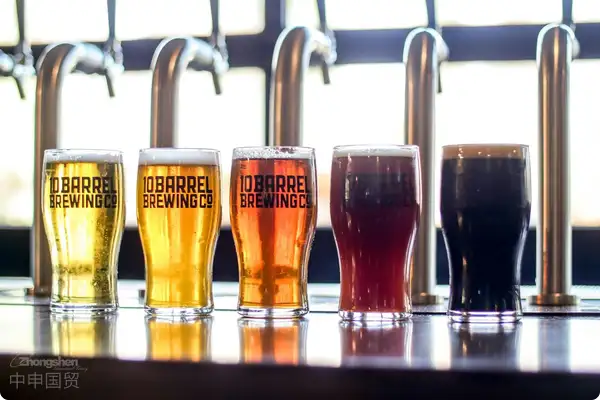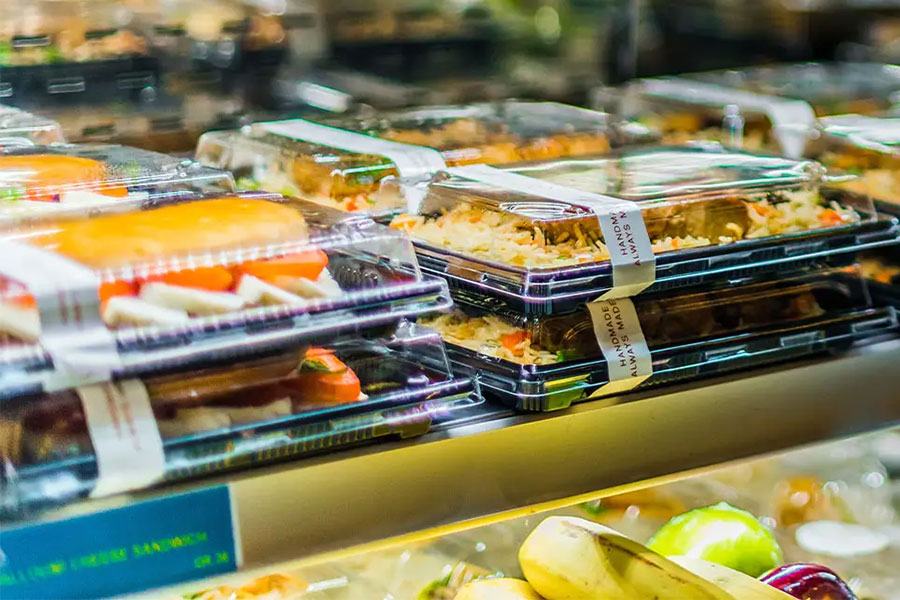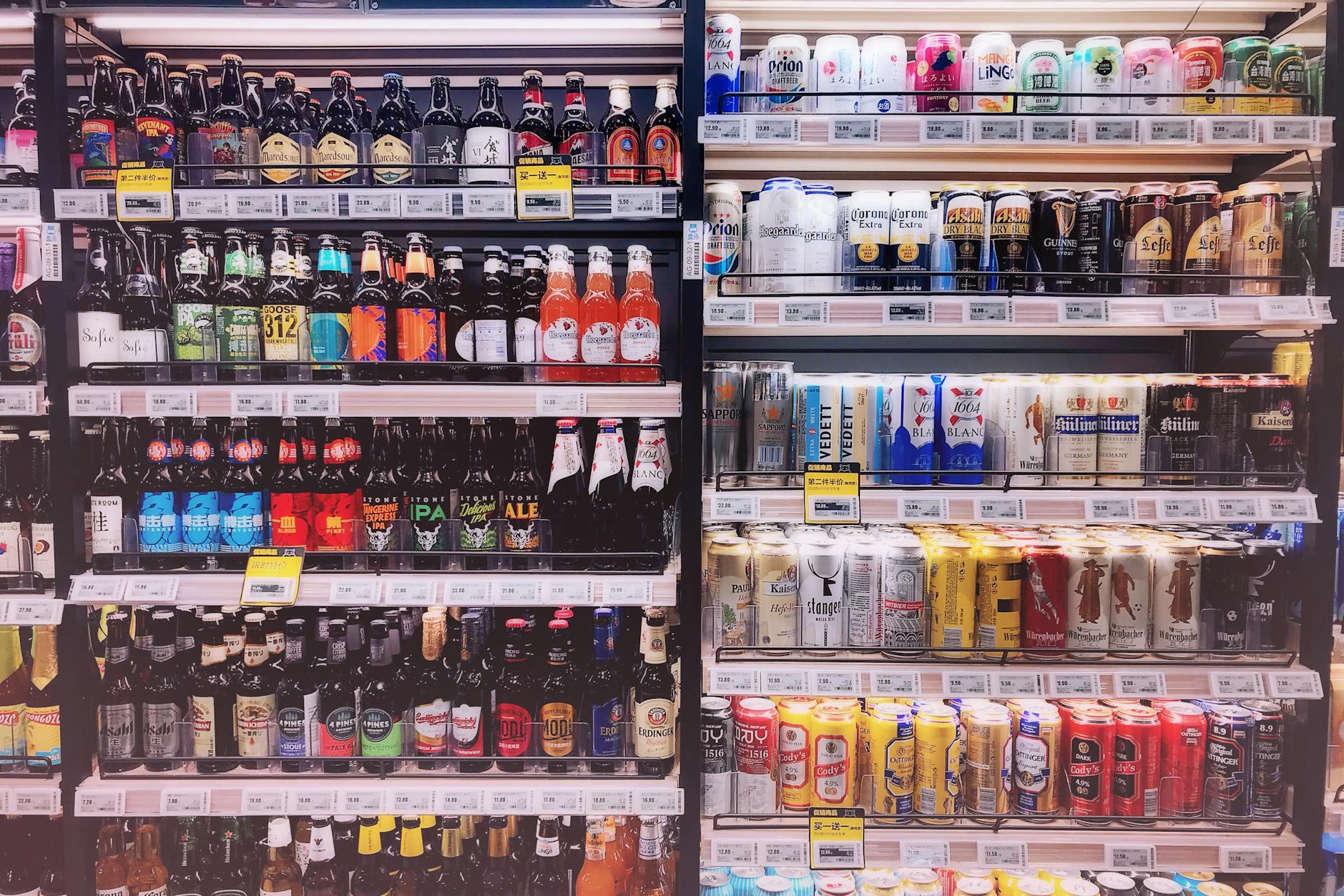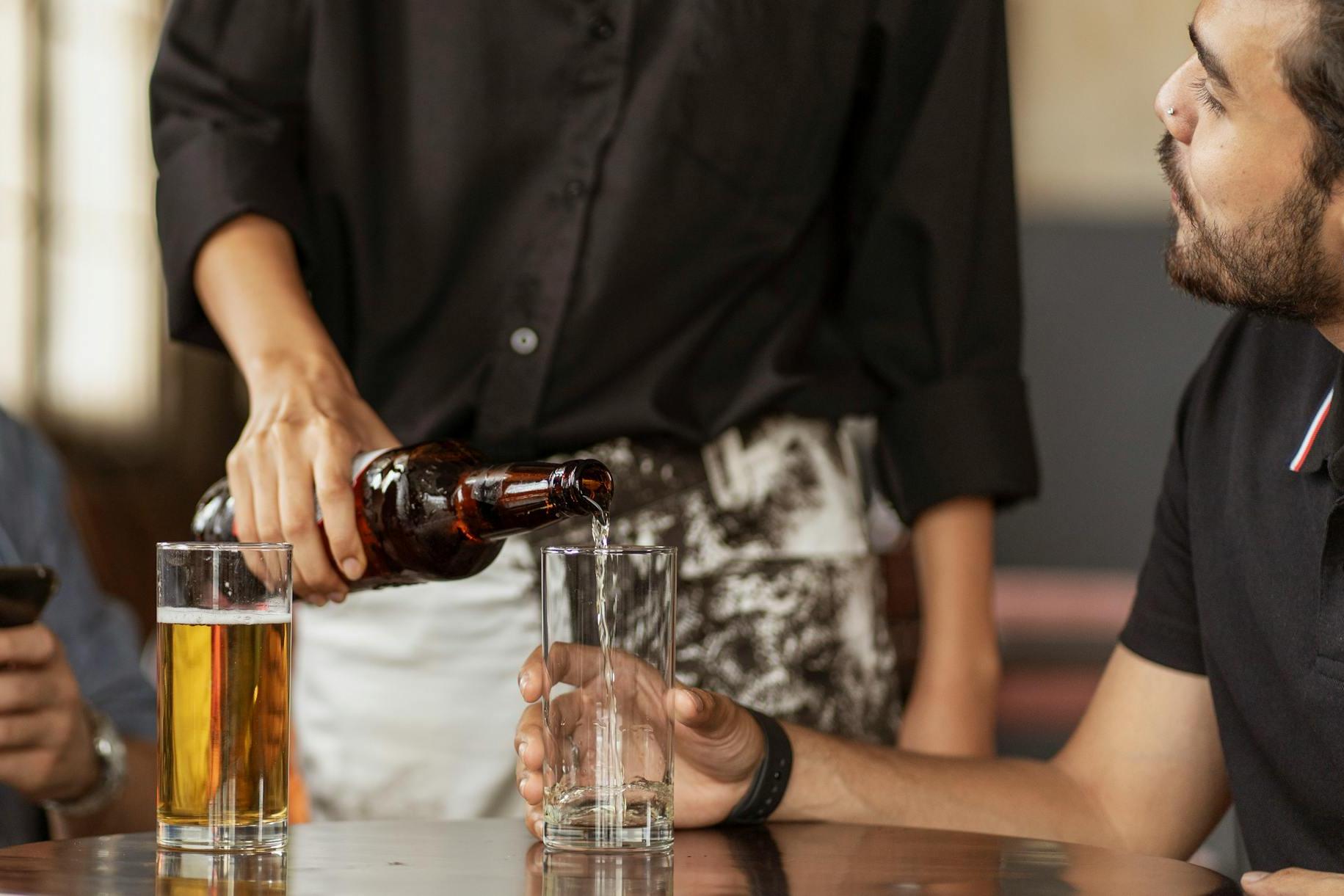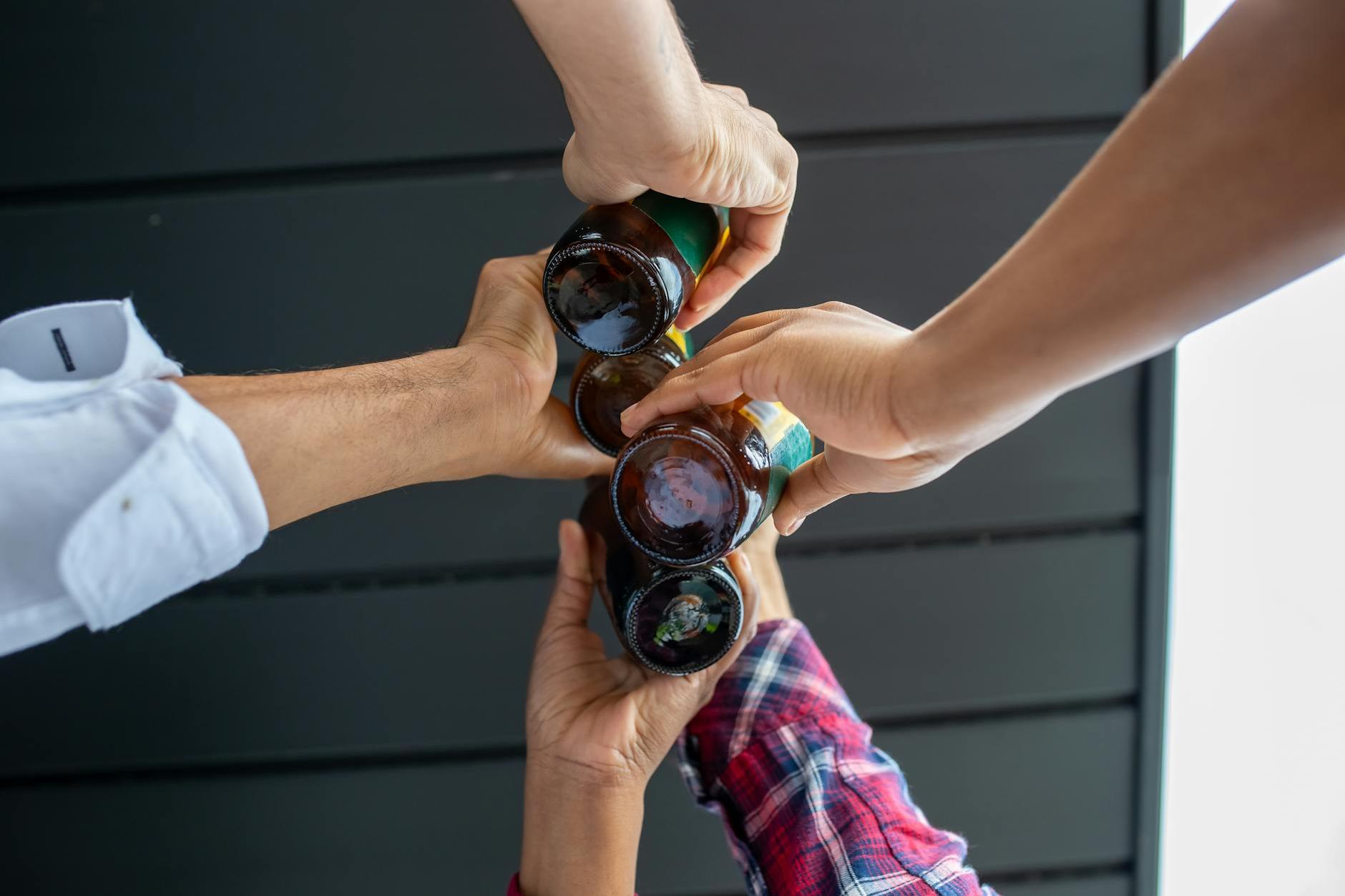Six Customs Reefs and Breakthrough Guides for Beer Import Agency Procurement
手机在线一区二区三区观看 |
中文字幕日韩欧美日韩在线 |
国产精品清纯白嫩美女s |
亚洲区激情区图片小说区 |
日本无限不卡1区2区3区 |
国产av剧情精品老熟女 |
国产中文高清日韩av网站 |
日韩久久精品视频一二三区
|
国产99视频精品免费视频美女 |
欧美日韩精品系列一区二区
|
欧美丰满人妻一区二区三区 |
国产精品久久久久久成人 |
日本不卡一区二区三区在线免费 |
97久久久综合亚洲久久88 |
亚洲十八禁精品成人一区二区 |
国产欧美日韩综合二区三区 |
亚洲一区二区在线观看的av |
91的麻豆精品国产自产在线 |
国产精品一区二区白浆视频 |
亚洲日本精品麻豆一区国产 |
国产精品1区二区三区 |
青青草原在线视频欧美 |
亚洲欧美日韩偷拍一区二区三区
|
亚洲和欧洲一码二码区哪 |
成a人片亚洲日本久久69 |
激情五月婷婷丁香六月 |
亚洲另类国产精品一区二区三区
|
午夜激情丝袜美腿诱惑影院 |
精品国产精品网麻豆系列 |
最近中文字幕mv免费高清 |
亚洲精品aⅴ中文字幕乱码麻豆 |
国产伦精品一区二区三区2 |
国产一区二区精品美女诱惑我 |
欧美一区二区三区中文字幕在线 |
日韩电影免费看中文字幕 |
亚洲成av人黄网站在线观看
|
婷婷四房综合激情五月在线 |
中文字幕女同性恋一区二区三区 |
国产乱码欧美乱码在线视频 |
亚洲欧美日韩欧美中文字幕 |
久久精品女人天堂av免费版 |
女同熟女少妇同性少妇女同 |
男人天堂国产在线2019 |
韩日国产精品一区二区三区 |
国产精品亚洲专区一区二区三区 |
欧美一区国产二区在线观看 |
亚洲欧洲日韩国产免费 |
欧美日韩一码二码三区四区 |
亚洲av成人一区国产精品 |
日本欧美韩国国产一区 99 |
精品视频美女一区二区三区 |
国产精品中文字幕免费观看 |
最近中文字幕mv免费高清
|
91国内揄拍国内精品人妻 |
亚洲国产日韩欧美高清片 |
91在线免费观看高清视频 |
亚洲成人日韩高清在线观看 |
av免费精品一区二区三区蜜桃 |
午夜天堂av天堂久久久 |
黄色av网址网站能看的 |
国产美脚交足视频在线观看 |
欧美日韩3一区二区三区精品 |
青草伊人久久综在合线亚洲 |
久久久久夜色国产精品亚洲av |
国产综合久久久一区二区三区 |
日韩精品人妻午夜一区二区三区
|
日韩特级黄色大片在线观看 |
亚洲国产欧美日韩成人精专区 |
国产精品久久精品久久国产 |
国产亚洲欧美另类久久久 |
99精品国产一区二区三区网站 |
99久久免费国产精品2021
|
日韩精品 中文字幕 有码系列 |
亚洲一区二区三区欧美精品 |
同房后下面流黄黄的液体 |
激情综合网五月六月丁香国产 |
国产露出精品一区二区三区91 |
91青青青手机频在线观看 |
99热这里只有精品2023 |
久久久精品欧美一区二区免费 |
精品国产一区二区三区久久久性
|
怡红院蕉国产免费现现视频 |
欧美日韩精品一区二区在线 |
亚洲天堂一区二区三区免费观看 |
日韩人妻精品久久久久久 |
国产欧美精品区一区二区三 |
亚洲美女日韩精品色图在线视频
|
亚洲国产成人激情视频在线 |
婷婷丁香蜜桃激情五月天 |
国产亚洲精品久久午夜玫瑰园 |
欧美日韩精品综合一区二区 |
日本一区二区在线视频观看
|
午夜精品久久久久久久2023 |
精品国产熟女一区二区三区 |
色哟哟一区二区三区中文字幕
|
91一区二区三区久久国产乱 |
成人特黄特色毛片免费看 |
欧美成人午夜一区二区三区 |
男人av天堂男人的网站 |
久久精品亚洲欧美日韩精品中文字幕 |
国产综合av在线免费观看 |
天天操天天干天天干天天操 |
小泽玛利亚电影免费在线观看 |
国产精品初高害羞小美女 |
人人妻人人妻人人妻碰碰 |
私人小影院网站午夜在线观看
|
欧美色欧美精品在线观看 |
日韩精品一区二区三区不长视频
|
人妻少妇精品一区毛二区 |
欧美一区二区三区激情免费 |
哪里可以看日本动作电影 |
国产区综合另类亚洲欧美 |
成人黄页视频在线播放 |
国产亚洲av午夜在线路线 |
精品欧美一区二区三区四区 |
精品少妇极品久久久久久久 |
国产一区免费在线观看99
|
国产精品欧美三级在线观看 |
欧美激情一区二区三区啪啪啪 |
日韩国产精品综合高清av= |
亚洲精品国产剧情久久9191 |
新片青青澡久久久久久久久精品
|
亚洲成a人片在线观看无遮挡 |
日韩av毛片高清免费在线观看 |
亚洲无人区乱码中文字幕 |
国产精品日本欧美一区二区三区
|
精品一区二区三区的天堂 |
92看看午夜福利合集免费观看 |
国产乱人精品视频69av
|
亚洲av电影一区二区在线观看 |
欧美激情精品久久久高清 |
欧美在线不卡视频每天更新 |
亚州国产欧美一区二区三区 |
黄色小说女久久久精品免费 |
色婷婷六月亚洲婷婷国产 |
亚洲欧洲成人va在线观看 |
日韩一区二区三区四区在线观看视频 |
欧美精品久久久久久一区二区三区 |
91精品国产综合久久久久久蜜月
|
国产欧美一区二区在线观看
|
欧美色欧美精品在线观看 |
久碰久摸久看好男人视频 |
亚洲精品高清视频在线播放 |
国产一区二区三区 视频 |
久久久国产综合av天堂 |
女同熟女少妇同性少妇女同 |
91精品国产乱码久久蜜桃麻豆 |
国产黄片a三级久久久久久 |
精品一区二区三区在线网站 |
久久亚洲国产精品五月天 |
欧美久久久久久久一区二区三区 |
日韩精品在线观看一二三
|
久久精品亚洲熟女av蜜謦 |
亚洲国产av一区二区三区 |
亚洲精品国产久久久久久 |
精品少妇极品久久久久久久 |
成人午夜视频全免费观看高清
|
亚洲人成一区二区三区不卡
|
一区二区三区欧美一级爽 |
蜜臀av免费一区二区三区观看
|
国产自拍偷拍在线一区二区 |
日韩人妻精品一区二区三区在线 |
亚州国产欧美一区二区三区 |
国产欧美一区二区图片专区 |
日韩a人毛片精品无人区乱码 |
高清日韩一区二区三区视频 |
黄色av网站未满十八周岁在线播放 |
中文字幕成人精品久久不卡
|
国产一区二区三区久久综合 |
亚洲天堂男人天堂女人天堂
|
小泽玛丽视频在线观看 |
适合一家人看的国产电影 |
国产精品美女久久福利网站 |
秋霞伦理日韩中文字幕av |
国产欧美日韩一区二区三区精品 |
欧美一区二区在线电影网 |
粉嫩欧美一区二区三区高清影视 |
96国语自产免费精品视频 |
99re热自拍视频在线 |
欧美日本一道道一区二区 |
婷婷四房综合激情五月在线 |
国产黄a三级三级三级av在线看 |
国产寡妇精品久久久久久 |
中文字幕成人精品久久不卡 |
中国一区二区三区高清电影 |
91精品久久久久久粉嫩 |
人妻在线视频一区二区三区 |
国产av一区二区色呦呦 |
亚洲无人区乱码中文字幕 |
2022国产精品黄色片 |
视频区 图片区 小说区免费 |
国产寡妇精品久久久久久 |
少妇的一区二区三区四区 |
日本中文字幕视频在线观看 |
中文高清在线中文字幕日韩 |
久久久久国产一区二区三区下载 |
亚洲国产精品久久男人天堂 |
国产精品一区二区三区剧情片
|
精品国产网址免费在线观看 |
91精品国产薄丝高跟在线播 |
欧美午夜一区二区三区精品 |
一区二区三区高清视频精品 |
一区二区三区三级18岁看的 |
91精品国产综合久久香蕉观看 |
美女性感黄网站视频久久久 |
亚洲十八禁精品成人一区二区
|
成人欧美一区二区三区在线小说 |
亚州女同性恋一区二区三区 |
欧美日韩一区二区三区精品视频 |
18禁黄色裸体网站入口 |
婷婷在线五月天在线视频 |
四季av一区二区三区中文字幕 |
亚洲av精品一区二区三区四区 |
激情综合网五月六月丁香国产 |
中文字幕精品乱码亚洲一区 |
尤物免费视频网站在线观看 |
亚洲av乱码一区二区三区绯色 |
亚洲综合视频在线免费观看 |
国产69精品久久777的观感 |
日本a级一区二区资源网站 |
美女18禁国产精品久久久久久 |
欧美日韩中文字幕一区不卡 |
91青青青手机频在线观看 |
国产亚洲加勒比久久精品 |
18禁超污无遮挡网站免费 |
国产欧美精品区一区二区三 |
欧美成人高清视频在线播放 |
欧美精品一本久久男人的天堂 |
国产精品久久观看美女毛茸茸 |
日韩黄色成人影院在线观看 |
成人黄网站色视免费大全 |
亚洲国产精品有码一区二区 |
精品日韩av高清一区二区三区 |
美女成人亚洲黄色福利视频 |
97色婷婷成人综合在线观看 |
视频一区二区三区四区五六区 |
国产美女捏自己奶头91
|
婷婷六月开心六月色六月
|
日本一区二区三区不卡在线看 |
国产欧美一区二区三区奶水 |
91久久精品一区二区三区大 |
亚洲精品国产综合一线久久 |
国产精品国产三级国av在线观看 |
色婷婷六月亚洲婷婷国产 |
最近中文字幕mv免费高清 |
亚洲熟女熟妇av一区二区三区 |
国产自产一区二区三区视频 |
亚洲欧洲日韩国产免费 |
五月婷婷网在线视频观看 |
婷婷99久久久精品综合 |
精品久久久久久亚洲网站 |
国产一区二区精品偷斗情91麻豆 |
久久精品一区二区66 |
精品人妻二区三区在线免费观看 |
一本之道av免费在线观看 |
99亚洲综合精品久久精品国产久 |
青草伊人久久综在合线亚洲 |
久久婷婷色香五月综合图 |
黑寡妇精品欧美一区二区毛 |
精品欧美一区二区三区四区 |
99精品国产一区二区三区网站 |
91亚洲欧美精品一区二区三区 |
国产精品免费一区二区视频 |
亚洲中文字幕中文字幕中文字幕 |
中文字幕成人精品久久不卡
|
亚洲欧美精品激情在线观看 |
97影院成人午夜电影在线观看 |
手机免费在线观看你懂得
|
一本之道av免费在线观看 |
亚洲精品国产成人久久精品网 |
欧美与黑人午夜猛交久久 |
欧美日韩精品一区二区在线 |
黄页网站免费观看小视频 |
粉嫩av一区二区三区在线播放 |
日韩欧美亚洲乱码中文字幕 |
亚洲国产精品线路久久
|
欧美日本国产一区二区三区 |
国产亚洲成人av看黄在线观看 |
欧美五月激情在线播放 |
爽国产成人精品午夜视频 |
久久99国产精品一区二区三区 |
午夜福利国产盗摄久久性 |
亚洲精品一区二区三区麻豆 |
亚洲男人天堂久久久久久久 |
久久精品国产96精品亚洲拳交 |
免费看国产污黄剧情网站 |
成人免费av中文字幕电影 |
国产在线视频欧美一区二区三区 |
久久产精品一区二区三区日韩 |
中文字幕精品一区二区三区老狼 |
青青草原在线视频欧美 |
欧美精品欧美一区二区精品久久久 |
五月天最新网址精品综合
|
婷婷四房综合激情五月在线 |
99视热频这里只有精品 |
欧美久久免费鲁丝一二区 |
欧美日韩亚洲中文字幕一区 |
国产亚洲一区二区操老熟女av |
怡红院蕉国产免费现现视频 |
日韩精品人妻午夜一区二区三区 |
亚洲产国偷v产偷v自拍一区 |
日本高清不卡电影一区二区
|
欧美综合在线观看一区二区 |
国产在线观看精品区一区 |
国产精品久久观看美女毛茸茸 |
亚洲精品乱码97久久久久久
|
欧美高清亚洲一区二区在线观看
|
国产精品极品白嫩在线 |
久热这里只有精品视频在线 |
91精品国产乱码久久蜜桃麻豆 |
日韩伦精品一区二区三区一级
|
国产欧美一区二区三区网站 |
亚洲五月六月丁香激情网站 |
午夜性色一区二区三区不卡视频 |
日韩伦精品一区二区三区一级 |
精品夜夜嗨av一区二区 |
亚洲欧洲精品一区二区三区不卡 |
久久蜜臀av一区二区中文字幕 |
日韩一区二区三区四区在线观看视频
|
18禁超污无遮挡网站免费 |
小草在线观看视频播放2019
|
国产欧美精品区一区二区三 |
91国偷自产中文字幕幕 |
国产成人精品综合久久久久换脸 |
国产亚洲欧美日韩在线爱豆 |
国产一区二区三区精品在线观看
|
亚洲熟女熟妇av一区二区三区 |
久久精品一区二区三区资源网 |
成人黄色在线免费观看网站
|
男女污污视频在线观看国产 |
国产av剧情精品老熟女 |
久久精品久久精品久久精品 |
国产精品亚洲av蜜桃三区 |
亚洲中文字幕中文字幕中文字幕 |
蜜臀人妻精品一区二区免费 |
欧美巨大精品一区二区三区 |
国产乱码欧美乱码在线视频 |
中文一区二区三区中高清免费 |
亚洲一区二区三区四区91 |
欧美制服丝袜国产日韩一区 |
亚洲欧美一区二区三区爽爽爽 |
亚洲va欧美va天堂v国产综合 |
日韩精品一区二区亚洲av性色 |
日本精品一区二区电影在线观看 |
国产精品区一区二区国模 |
日本免费电影在线观看一区二区三区
|
色爱区综合激情五月综合激情
|
国产精品十八禁一区二区三区 |
日韩国产一区二区三区av |
国产一区二区三区精品成人爱 |
亚洲av永久精品毛片天堂 |
美女性感黄网站视频久久久 |
美国毛片亚洲社区成人看 |
亚洲国产日本一区二区三区 |
一本之道av免费在线观看 |
欧美中文字幕一区二区综合我 |
国产综合久久精品东京热 |
最新亚洲电影一区二区三区 |
日韩精品亚洲一区二区三区四区
|
欧美五月激情在线播放 |
国产精品久久久亚洲综合天堂 |
欧美在线不卡视频每天更新 |
在线看片日本免费一区二区 |
色婷婷亚洲激情人妻交换小说 |
一区二区三区有码在线播放 |
女同性恋精品一二三四区
|
午夜天堂精品久久久久91色爱 |
一区二区三区亚洲欧美日韩人色
|
亚洲欧美午夜精品一区二区三区 |
国产亚洲成人av看黄在线观看 |
91人妻人人澡人人爽从精品 |
国产一区二区精品久久呦 |
亚洲国产精品久久久久性色 |
亚洲电影天堂之男人的服务天堂 |
精品一区二区三区成人免费视频
|
精品国产乱码久久久久久夜深 |
欧美日韩久久久久免费看 |
日韩欧美中文字幕在线四区 |
欧美精品一区二区三区在线看午夜 |
久久精品一区二区66 |
久久久精品一区二区三区大全 |
色婷婷av一区二区三区免费 |
国产精品日韩精品中文字幕 |
久久久精品一区二区三区大全 |
日韩中文字幕久久一二三区 |
欧美老人与小伙子性生交 |
18禁真人污视免费网站 |
久久91精品国产丰满美女 |
国产精品夜夜春夜夜爽久久小
|
日本一区二区三区不卡视频在线 |
亚洲高清日韩精品一区二区三区网 |
青青草原在线视频观看精品 |
小说区图片区偷拍区视频 |
国产精品清纯白嫩美女s |
美国毛片亚洲社区成人看 |
精品久久久一区二区三区国产 |
91在线免费观看高清视频 |
精品国产一区二区色老头 |
亚洲成av人一区二区三区 |
中文字幕免费av中文字幕免费
|
亚洲精品久久久噜噜噜久久 |
日本av电影一区二区在线观看 |
亚洲av中的一区二区三区四区 |
小说区图片区视频区亚洲 |
香蕉91成人一区二区三区网站 |
中文字幕欧美一区二区三区 |
怡红院蕉国产免费现现视频 |
久久精品亚洲欧美日韩精品中文字幕 |
日本免费中文字幕一区二区久久
|
国产精品区一区二区国模 |
亚洲av资源网站在线观看 |
国产av剧情精品老熟女 |
亚洲国产精品久久久久性色av |
最新日韩欧美不卡一二三区 |
91精品国产综合久久久久久蜜月 |
午夜天堂精品久久久久91色爱 |
欧美一区国产二区在线观看 |
日韩欧美大片中文字幕在线观看
|
51国产午夜精品免费视频 |
91久久精品国产91久久性色 |
亚洲电影天堂之男人的服务天堂 |
欧美一区二区三区免费在线观看
|
日本一区二区三区免费不卡视频 |
99视热频这里只有精品 |
中文字幕一区二区人妻秘书
|
欧美一区二区自偷自拍视频 |
精品视频美女一区二区三区 |
精品国产污污在线18禁 |
午夜精品久久久久9999高清 |
久久久久夜色国产精品亚洲av |
国产欧美韩日一二精品专区 |
欧美日韩久久久久免费看 |
国产一区二区三区精品区在线 |
欧美精品秘密入口一区二区三区 |
成a人片亚洲日本久久69 |
小泽玛利亚影片在线观看 |
精品国产日韩欧美另类免费观看 |
国产欧美一区二区三区精剧 |
av免费精品一区二区三区蜜桃 |
免费看污片网站在线观看 |
国产精品妇女久久久久久 |
亚洲av日韩av全部精品 |
日韩欧美国产在线看免费 |
久久av一区二区三区四区五区 |
91一区二区三区久久国产乱 |
国产二区三区在线观看视频 |
女同熟女少妇同性少妇女同 |
色播五月麻豆激情综合网 |
欧美日本国产一区二区三区 |
亚洲区欧美区综合区自拍区
|
色天天综合色天天天天看大片 |
欧美精品国产精品日韩系 |
日韩精品成人av免费看 |
日韩乱码免费一区二区三区 |
亚洲精品一区二区三区四区av |
国产精品成av人在线观看片 |
99久久精品免费看国产四区 |
人妻av在线一区二区三区 |
欧美激情一区二区三区精品 |
最近中文字幕高清免费大全
|
国产一区二区三区久久综合 |
国产69精品久久777的观感 |
欧美精品国产精品日韩系 |
国产精品爽爽va在线全集观看
|
国产精品久久久久久吹潮 |
日韩国产另类欧美在线观看 |
国产精品亚洲专区一区二区三区 |
国产亚洲欧美传媒麻豆精品
|
久久99精品久久久久久秒播 |
日韩精品人妻午夜一区二区三区
|
精品国产高清三级在线观看 |
亚洲精品亚洲人在线观看 |
日韩人妻成人福利电影一区二区
|
日韩在线观看中文字幕一区二区
|
一区二区三区有码在线播放 |
亚洲欧美一区精品中文字幕 |
999中文视频在线观看
|
大香蕉欧美人妻一二三区 |
欧美国产精品久久久久久 |
欧美成人精品视频一区二区 |
亚洲精品一区二区三区免 |
国产精品欧美日韩中字一区二区 |
疯狂欧美牲乱大交777 |
欧美不卡一二三在线视频 |
国产乱码欧美乱码在线视频
|
欧美在线不卡视频每天更新 |
国产高清在线精品一区二区三
|
影音中文字幕av资源在线 |
中文字幕乱码亚洲无线码二区 |
精品夜夜嗨av一区二区 |
日本一区二区三区人工换脸 |
国产清纯美女啪精品一区 |
99久久免费国产精品2021 |
久久精品色妇熟妇丰满人妻 |
久久产精品一区二区三区日韩 |
精品亚洲国产成人痴汉av |
久久97久久99久久综合欧美 |
国产精品91一区二区三区四区 |
久久精品国产88久久综合张津瑜
|
国产伦精品一区二区三区在线观
|
国产精品清纯白嫩美女s |
国产av剧情精品老熟女 |
欧美巨大精品一区二区三区
|
最新国产日韩欧美中文在线 |
欧美一区二区三区亚洲一区 |
国产av一区二区极品六六 |
午夜福利国产盗摄久久性 |
美女18禁国产精品久久久久久 |
成人污污视频在线观看网站 |
国产女同性恋一区二区三区 |
国产自产av一区二区三区性色
|
欧美在线不卡视频每天更新 |
国产精品日本欧美一区二区三区 |
午夜国产三级一区二区三 |
日本高清不卡中文字幕免费 |
国产精品一区二区三区色噜噜 |
小说区图片区视频区亚洲 |
久久av一区二区三区四区五区 |
精品视频美女一区二区三区 |
日韩欧美国产中文字幕综合 |
婷婷激情综合亚洲五月色 |
中文字幕高清在线一区二区不卡 |
日本黄色亚洲成人日韩欧美 |
国产精品美女下面无遮挡 |
亚洲黄色av一区二区在线观看
|
亚洲国产日本一区二区三区 |
国产精品91一区二区三区四区 |
亚洲熟女av综合一区二区三区个 |
欧美黄色男人日女的阴道 |
亚洲色图国产精品一区二区三区 |
国产一区二区三区在线啊 |
日韩欧美中文字幕在线四区 |
成人欧美一区二区三区在线小说 |
色婷婷在线免费观看视频 |
99久在线国内在线播放免费观看
|
欧美丰满人妻一区二区三区
|
国产美女捏自己奶头91 |
欧美激情综合色综合啪啪啪五月
|
亚洲精品久久久久久宅男 |
日韩在线视频不卡一区二区三区
|
久久精品成人一区二区三区蜜臀 |
国产精品亚洲一区二区久久 |
日本一区二区三区视频在线播放
|
久久av不卡人妻一区二区三区 |
久超在线精品av一区二区三区 |
久久久精品少妇一区二区三区 |
在线看片日本免费一区二区 |
国产精品色午夜免费视频69 |
亚洲av香蕉一区二区三区av |
999中文视频在线观看 |
欧美黄片一区二区三区在线观看 |
日韩特级黄色大片在线观看 |
欧美日韩加勒比一二三区 |
欧美精品高清在线一区二区三区
|
国产亚洲一区二区三区在线播放
|
国产精品激情视频一区二区三区 |
亚洲欧美日韩综合视频免费看 |
欧美一区两区三区在线观看 |
国产亚洲欧洲av一区二区三区 |
欧美一区二区三区四区乱码小说 |
91视在线国内在线播放 |
国产精品久久久精品一级 |
91精品国产综合久久久久久蜜月
|
色播五月麻豆激情综合网 |
久久精品女人18国产毛片
|
最近日韩一区二区三区四区av |
2022国产精品黄色片 |
国产五月色婷婷六月丁香视频
|
久久精品成人一区二区三区蜜臀
|
日韩精品一区二区三区色 |
国产精品宅福利无圣光视频 |
成人污污视频在线观看网站 |
91亚洲欧美综合高清在线 |
一区二区三区亚洲中文字幕 |
男女污污视频在线观看国产 |
午夜三级视频久久国产丝袜美腿 |
5252欧美在线男人的天堂 |
爽国产成人精品午夜视频 |
三级av电影在线免费观看 |
爽国产成人精品午夜视频 |
人人妻人人玩人人澡人人爽理论片 |
天天天天天日夜夜夜夜夜夜操 |
亚洲精品区国产精品99 |
97久久夜色精品国产蜜桃 |
久久久国产精品一区久久 |
蜜臀av一区二区三区蜜乳 |
69堂凹凸视频在线观看 |
97久久伊人嫩草一区二区三区 |
午夜精品久久久久久久2023 |
色狠狠婷婷一区二区三区 |
亚洲va欧美va人人爽高清 |
亚洲国产成人久久一区二区三区 |
欧美成人免费va影院高清 |
国产免费av一区二区三区 |
日韩精品毛片一区到三区 |
黄色片子中文字幕版免费 |
亚洲另类国产精品一区二区三区 |
一本色道69色精品综合久久 |
尤物免费视频网站在线观看
|
亚洲av乱码一区二区三区绯色 |
婷婷六月开心六月色六月 |
99久久精品免费看蜜桃 |
国产精品日韩av一区二区三区
|
国产网曝门精品一区二区三区
|
欧美激情一区二区三区四区 |
99视热频这里只有精品 |
国产大学生吞精在线视频 |
久热这里只有精品视频在线 |
国产成人麻豆午夜精品影院游乐网
|
欧美一区二区自偷自拍视频
|
欧美在线不卡视频每天更新
|
日韩欧美精品久久久免费 |
欧美成人精品一区二区综合免费
|
精品亚洲国产成人痴汉av |
99re热在线播放视频 |
性色av资源一区二区三区 |
最新日韩欧美不卡一二三区 |
欧美日韩加勒比激情系列 |
亚洲天堂一区二区三区免费观看 |
亚洲精品欧美白浆久久久 |
亚洲欧美日韩综合第一第二区 |
疯狂欧美牲乱大交777 |
手机在线观看国产一区二区三区 |
久久天堂一区二区三区av
|
玩弄人妻少妇精品视频网站 |
国产一级性片在线观看 |
日本不卡免费一区二区三区 |
国产午夜精品一区二区三区不卡 |
综合久久五十路熟女中出 |
日韩欧美一区二区三区三 |
国产女同av一区二区三区 |
色哟哟一区二区三区中文字幕 |
久久国产亚洲精品超碰热 |
99riav国产精品视频一区 |
韩国三级电影善良的嫂子 |
久久蜜臀av一区二区中文字幕 |
日韩十八线网站操操搞黄色 |
国产精品日韩精品中文字幕 |
精品久久久久久人妻熟妇
|
中国一区二区三区高清电影 |
韩国三级华丽外出在线观看 |
精品国产女同一区二区三区 |
欧美精品国产一区二区免费 |
国产精品高清国产三级国产a∨ |
久久精品成人一区二区三区蜜臀 |
国产精品中文字幕免费观看
|
国产精品国产三级国产专区 |
久久av不卡人妻一区二区三区 |
欧美一区二区三区高清在线视频
|
色综合天天综合网天天狠天天 |
亚洲一区二区三区高清影片 |
日韩欧美精品视频一区二区三区 |
91精品国产亚洲爽啪在线影院 |
小说区图片区视频区亚洲 |
亚洲天堂精品亚洲天堂精品课程 |
国产亚洲欧美日韩在线爱豆 |
神马午夜福利影院在线观看 |
国产欧美大陆日韩精品亚洲综合 |
小草在线观看视频播放2019 |
国产午夜福利视频第三区 |
久久精品色妇熟妇丰满人妻 |
欧美三级在线观看不卡1区 |
人妻少妇电影一区二区三区四区
|
久99精品免费观看视频 |
亚洲欧美精品激情在线观看 |
国产流白浆一区二区三区免费视频 |
日本一区二区三区在线观看免费 |
亚洲中文字幕精品熟女一区 |
国产精品妇女久久久久久 |
最新中文字幕乱码不卡一区 |
亚洲av成人一区二区三区在线
|
国产精品女人高潮毛片视频 |
色姑娘天天操天天日天天舔 |
巨乳人妻的诱惑电影日本 |
欧美一区二区三高清在线观看 |
国产激情澎湃视频在线观看 |
秋霞伦理日韩中文字幕av |
欧美制服丝袜国产日韩一区 |
国产爽爽爽爽爽爽爽爽爽 |
久久精品国产亚洲av日韩 |
夜夜夜夜爽爽爽爽爽爽爽 |
粉嫩欧美一区二区三区高清影视 |
精品欧美一区二区三区四区 |
国产盗摄一区二区三区厕所视频
|
亚洲精品色婷婷在线观看 |
哪里可以看日本动作电影 |
秋霞伦理日韩中文字幕av |
欧美丰满人妻一区二区三区
|
丝袜人妻电影一区二区三区 |
国产精品久久永久免费看 |
精品久久久久久亚洲一区二区三区 |
日韩av在线不卡免费看 |
制服丝袜视频一区二区三区
|
蜜臀人妻精品一区二区免费 |
我吸着老师的白嫩大乳漫画 |
国产自产一区二区三区视频 |
日韩特级黄色大片在线观看 |
国产日韩欧洲亚洲一二三区 |
国产农村妇女一二三区 |
国产91精品露脸国语对白 |
av网站大全在线免费观看 |
97久久久综合亚洲久久88 |
国产五月色婷婷六月丁香视频
|
老司机精品成人免费视频 |
日韩精品中文字一区二区 |
亚洲精品国产成人久久精品网 |
成人免费av中文字幕电影 |
亚洲欧美日韩综合另类一区
|
免费无遮挡午夜视频网站 |
护士精品一区二区三区99 |
欧美一区二区在线观看不卡 |
欧美精品网站一区二区三区
|
国产综合欧美专区一区二区三区 |
十分钟做a小视频免费观看 |
国产精品亚洲二区在线看 |
天天爱天天做久久狼狼黑人 |
亚洲天堂一区二区三区免费观看 |
国产欧美另类久久久精品不卡 |
中文字幕高清在线一区二区不卡 |
91偷国自产一区二区三区蜜臀 |
亚洲区激情区图片小说区 |
91久久国产精品久久91 |
国产不卡手机在线观看 |
国产丝袜美女av一区二区三区
|
中文字幕十乱码中文字幕 |
尤物免费视频网站在线观看 |
欧美成人精品一区二区综合免费 |
精品久久国产老人久久综合 |
日韩精品亚洲国产成人av |
狠狠人妻久久久久久综合密桃 |
日韩av毛片高清免费在线观看
|
久久九九视频免费观看久久九九视频
|
国产精品亚洲专区一区二区三区 |
一区二区三区手机在线播放 |
日韩人妻精品久久久久久 |
亚洲中文字幕丝袜熟女久久 |
国产精品久久一区二区三区青青
|
欧美熟妇一区二区三区仙踪林
|
国产大学生自拍视频在线 |
国产精品性色一区二区三区在线蜜
|
国产精品熟女av老熟女 |
婷婷六月开心六月色六月 |
国产精品久久久亚洲综合天堂
|
国产精品女人高潮毛片视频 |
丝袜人妻电影一区二区三区 |
精品一区二区三区在线网站 |
国产精品国产三级国产剧情 |
亚洲欧美日韩加勒比在线 |
亚洲欧美日韩综合另类一区 |
国产无摭挡又爽又色又刺激 |
精品一区二区免费视频蜜桃 |
男女污污视频在线观看国产 |
手机在线免费观看你懂得 |
亚洲精品aⅴ中文字幕乱码麻豆
|
狠狠深爱婷婷久久综合区一 |
国内精品免费偷拍小视频 |
欧美日韩激情在线看片亚洲 |
亚洲精品揄拍自拍首页一 |
欧美精品一区二区日韩精品
|
婷婷六月开心六月色六月 |
国产在线观看精品区一区 |
av免费精品一区二区三区蜜桃 |
欧美精品一区二区三区日韩 |
欧美国产成人久久精品直播 |
亚洲欧美国产精品一区二区三区
|
国产精品双马尾后入爆操 |
色哟哟一区二区国产精品 |
吉川爱美一区二区三区视频 |
超碰超碰超碰超碰超碰图片 |
成片免费视频观看大全一起草 |
国产无摭挡又爽又色又刺激 |
五月综合婷婷开心综合婷婷 |
久久精品三级一区二区av |
国语自产拍在线观看国产精品 |
一区二区三区高清视频精品 |
国产肉丝精品91一二区 |
日韩精品a欧美精品a亚洲精品 |
国产片av在线观看精品免费 |
亚洲欧美色欧另类欧日韩 |
欧美不卡一区二区在线视频 |
haoleav一区二区三区 |
亚洲国产精品无石码久久 |
欧美成人精品视频一区二区 |
亚洲男人的天堂av中文字幕 |
欧美国产亚洲自拍第二页 |
亚洲av毛片一区二区三区影视 |
激情五月婷婷丁香久久综合网 |
国产精品欧美日韩在线观看 |
一本不卡欧美一区二区三区 |
精品久久久一区二区三区国产 |
91超碰极品人人人人成人 |
午夜性色一区二区三区不卡视频 |
亚洲欧洲精品一区二区三区不卡 |
亚洲成a人片在线观看无遮挡 |
一级a做爰视频在线观看 |
国产精品成av人在线观看片 |
a天堂中文在线官网在线 |
国产成人91色精品免费网站 |
国产流白浆一区二区三区免费视频 |
97久久伊人嫩草一区二区三区
|
国产综合av在线免费观看 |
手机在线一区二区三区观看 |
国产精品免费在线一区二区
|
亚洲国产精品久久久二区 |
最近中文字幕高清免费大全
|
雅日韩欧美一区二区三区 |
亚洲自拍亚洲自拍亚洲自拍 |
日本免费播放器一区二区
|
亚洲精品涩涩在线观看 |
亚洲欧美日韩加勒比在线 |
日韩精品一区二区亚洲av性色
|
激情五月婷婷丁香六月 |
日韩精品自拍偷拍一区二区 |
婷婷在线五月天在线视频 |
亚洲熟女自拍偷拍一区二区 |
巨乳人妻的诱惑电影日本 |
日韩免费av区二区电影 |
久久99精品久久久久久秒播 |
人妻中文字幕在线一二区 |
精品欧美一区二区三区四区 |
亚洲婷婷久久一本青青久久网站
|
欧美熟妇一区二区三区仙踪林 |
日本a级一区二区在线免费观看 |
国产流白浆一区二区三区免费视频
|
久久婷婷六月丁香综合啪 |
小说区图片区偷拍区视频 |
在线播放国产久草性av |
国产网曝门精品一区二区三区
|
欧美日韩精品系列一区二区 |
欧美五月激情在线播放 |
亚洲黄色av一区二区在线观看 |
欧美日韩亚洲中文字幕二区网址 |
成人黄网站色视免费大全 |
白嫩丰满少妇一区二区三区 |
亚洲欧洲成人va在线观看 |
国产在线精品二区一东京热
|
国产精品自产在线观看一 |
成人特黄特色毛片免费看 |
大胸熟女少妇一区二区三区 |
中文字幕欧美一区二区三区 |
一区二区国产精品三区在线电影 |
精品久久久一区二区三区国产 |
欧美视频在线一区二区三区
|
中文字幕加勒比视频二区 |
黄色av网站未满十八周岁在线播放
|
高清亚洲中文字幕一区二区
|
欧美精品一区二区三区在线看午夜 |
黄页男女视频网址大全免费观看 |
日韩欧美国产一区二区免费
|
久久精品美女av一区二区 |
国产欧美在线一区二区三 |
日韩免费高清中文av |
精品人妻潮喷久久久又裸又黄 |
五月婷婷丁香综合中文字幕 |
精品少妇极品久久久久久久
|
一本不卡欧美一区二区三区
|
日韩免费av区二区电影 |
欧美精品高清在线一区二区三区 |
亚洲欧美午夜精品一区二区三区 |
蜜臀av在线精品国自产拍 |
99人妻精品日韩欧美一区二区三区
|
亚洲自拍亚洲自拍亚洲自拍 |
亚洲第一欧美一区二区精品 |
国产精品91一区二区三区四区 |
丝袜人妻电影一区二区三区 |
亚洲av日韩av全部精品 |
亚洲欧美中文日韩另类特殊 |
亚洲欧美日本在线视频观看 |
国产精品97久久久久久毛片 |
国产二区三区在线观看视频 |
91精品国产综合久久香蕉观看 |
日韩精品一区二区亚洲av性色 |
婷婷激情综合亚洲五月色 |
欧美一区二区在线观看不卡
|
亚洲一区二区三区高清影片 |
欧美变态口爆一区二区三区 |
在线播放国产久草性av |
大胸熟女少妇一区二区三区 |
不卡在线一一区二区三区91 |
国产自产av一区二区三区性色
|
中文字幕精品乱码亚洲一区
|
91视在线国内在线播放 |
亚洲区欧美区综合区自拍区
|
欧美日本一道道一区二区 |
欧美激情欲高潮视频高清 |
日本免费一区二区三区视频在线 |
日韩av高清中文字幕在线观看 |
日韩av成人影院在线观看 |
欧美国产成人久久精品直播
|
欧美精品一区二区三区日韩 |
久久久国产综合av天堂
|
亚洲av永久精品毛片天堂 |
欧美综合在线观看一区二区 |
久久国产亚洲精品超碰热 |
欧美日韩一区二区三区精品视频 |
暗交小拗女一区二区三区 |
麻豆国产精品专区在线观看 |
精品久久久久久99蜜桃 |
中文字幕精品久久一区二区三区
|
国产露出精品一区二区三区91
|
欧美午夜一区二区三区精品 |
久久一区二区三区欧美亚洲 |
国产精品亚洲av蜜桃三区 |
久久精品国产亚洲欧美成人 |
欧美日韩精品视频一区二区三区四区
|
亚洲中文欧美日韩在线不卡 |
一区二区三区亚洲欧美日韩人色
|
国产精品97久久久久久毛片 |
亚洲精品国产综合一线久久 |
国产精品午夜福利免费视频 |
同房后女生下面有黄色分泌物 |
国产av一区二区极品六六 |
伊人久久大香线蕉综合bd高清 |
一区二区亚洲欧美在线观看 |
精品夜夜嗨av一区二区 |
欧美色老熟妇与性老熟妇 |
欧美色偷偷在线视频播放 |
haoleav一区二区三区 |
日韩人妻精品一区二区三区在线
|
五月婷婷网在线视频观看 |
精品国产污污在线18禁 |
亚洲av午夜精品久久久 |
日韩在线一区二区三区中文字幕 |
精品国产aⅴ一区二区三区在线看 |
超碰超碰超碰超碰超碰图片 |
妖精视频一区二区三区四区 |
欧美一区二区在线观看不卡 |
日韩精品自拍偷拍一区二区 |
国产激情澎湃视频在线观看 |
欧美午夜一区二区三区精品 |
国产自产av一区二区三区性色
|
久久99国产综合精品伦理片 |
国产免费一区二区三区性色 |
av小说亚洲日中文字幕 |
欧美一区二区免费在线观看 |
午夜精品久久久久久久2023 |
日韩欧美国产一区二区在线
|
国产精品蜜臀av在线一区 |
国产精品国产三级国产剧情 |
日本高清不卡中文字幕免费 |
中文字幕欧美一区二区三区 |
日韩欧美中文字幕一区二区三区 |
亚洲天堂精品亚洲天堂精品课程 |
国产精品激情视频一区二区三区 |
色爱区综合激情五月综合激情 |
疯狂欧美牲乱大交777 |
在线精品日韩亚洲欧一二三区 |
欧美激情一区二区三区精品
|
国产精品久久久久久吹潮 |
亚洲免费中文字幕一区二区三区 |
日韩精品一区二区三区色 |
一区二区三区亚洲欧美日韩人色
|
欧美激情精品久久久高清 |
日韩精品一区二区三区四区不卡 |
欧美日韩国产精品系列区
|
国产亚洲精品久久久一区 |
日韩男女激情片段在线观看视频 |
小泽玛利亚的电影在线观看 |
欧美午夜精品久久久久久黑人 |
后入亚洲美女一区二区三区
|
国产主播一区二区三区在线观看
|
加勒比东京热拍拍一区二区 |
国产吧中文字幕欧美日韩 |
69堂凹凸视频在线观看 |
亚洲人成一区二区三区不卡 |
av网站在线免费观看入口 |
国产欧美精品一区二区在线 |
欧美日韩二区三区在线观看 |
国产女同av一区二区三区 |
成人欧美一区二区三区在线小说 |
日本中文字幕视频在线观看 |
爱丝官网一区二区午夜福利视频 |
一区二区三区亚洲欧美日韩人色 |
亚洲欧美日韩人成在线播放 |
国产中文高清日韩av网站 |
国产一区二区自拍偷拍视频 |
精品久久久国产成人久久综合一 |
欧美成人午夜电影在线观看 |
国产网曝门精品一区二区三区 |
开心五月激情五月婷婷综合网 |
亚洲国产精品一区二区免费电影 |
国产精品中文字幕在线观看 |
久久国产夜色精品鲁鲁99
|
国产网曝门精品一区二区三区 |
精品国产网址免费在线观看 |
国产自拍三级视频在线观看 |
欧美日韩中文字幕午夜在线
|
国产一级二级三级aa视频 |
久久天天躁夜夜躁狠狠躁 |
亚州女同性恋一区二区三区
|
国产中文高清日韩av网站 |
国产精品一区二区三区剧情片 |
色婷婷综合午夜色荡天天 |
成a人片亚洲日本久久69 |
五月婷婷丁香综合中文字幕 |
狠狠狠综合久久久久久久 |
欧美日韩3一区二区三区精品 |
日韩免费av区二区电影 |
69堂凹凸视频在线观看 |
一区二区三区欧美一级爽 |
日本伦理在线观看中文字幕 |
欧美日韩中文字幕午夜在线
|
网友自拍偷拍视频一区二区 |
日韩伦理中文字幕一区二区 |
91麻豆精品国产91久久久熟女 |
日韩av毛片高清免费在线观看 |
青青草原在线视频观看精品 |
中文字幕一区二区人妻秘书 |
成人精品一区二区三区电影黑人 |
国产高颜值美女主播在线 |
在线播放亚洲欧美日韩第一区 |
99人妻精品日韩欧美一区二区三区 |
色哟哟一区二区三区中文字幕 |
国产丝袜美腿一区二区三区 |
中文字幕日韩欧美日韩在线
|
国产亚洲一区二区操老熟女av |
国产成人精品高清在线麻豆 |
国产成人一区二区青青草原 |
欧美成人精品一区二区综合免费 |
亚洲av成人一区二区三区在线 |
日本高清区一区二区三区四区五区
|
在线观看精品国产亚洲av |
国产精品一区二区三区剧情片 |
色哟哟一区二区国产精品 |
欧美中文字幕精在线不卡
|
开心五月激情五月婷婷综合网 |
日本高清不卡中文字幕免费 |
日本精品一区二区电影在线观看
|
2中文字幕版亚洲无乱码 |
日本欧美韩国国产一区 99 |
国产精品白丝av嫩草影院 |
精品久久久久久99蜜桃 |
粉嫩欧美一区二区三区高清影视 |
亚洲av午夜精品久久久 |
亚洲综合国产一二三四五区 |
黄色a级三级三级三级的电影 |
亚洲精品一区二区三区小说
|
亚洲精品中文字幕乱码二区 |
国产未成女一区二区三区 |
国产一区二区av在线播放 |
国产亚洲av另类一区二区三区 |
女同熟女少妇同性少妇女同 |
国产欧美一区二区图片专区 |
亚洲色图国产精品一区二区三区
|
色狠狠婷婷一区二区三区 |
午夜天堂av天堂久久久 |
欧美久久久久久久一区二区三区 |
日本一区二区国产好的精华液 |
日韩在线中文字幕第一页 |
国产欧美一区二区在线观看 |
国产肉丝精品91一二区 |
精品久久久久久人妻熟妇 |
亚洲美女日韩精品色图在线视频 |
日韩欧美中文字幕无敌色 |
欧美不卡一二三在线视频 |
亚洲午夜精品毛片成人播放 |
吉川爱美一区二区三区视频 |
青青草av一区二区三区 |
亚洲精品中国一区二区久久
|
精品国产乱码久久久久久夜深 |
国产女同性恋一区二区三区 |
亚洲精品高清视频在线播放
|
91亚洲国产成人久久精品蜜臀 |
欧美日韩一区二区三区四区视频
|
国产自产一区二区三区视频 |
欧美一区二区日本国产激情 |
一区二区三区日本韩国欧美 |
99re热在线视频精品观看 |
一区二区三区高清视频精品 |
91在线免费观看高清视频 |
欧美老人激情五月综合网 |
国产日本欧美在线一区二区
|
精品亚洲国产成人痴汉av |
亚洲av日韩av全部精品 |
人妻少妇电影一区二区三区四区
|
国产精品午夜福利影院在线观看 |
亚洲国产av一区二区香蕉精品
|
男女污污视频在线观看国产 |
欧美二区三区久久久精品 |
精品国产一区二区三区蜜臂 |
欧美日韩精品一区二区不卡 |
久久婷婷色一区二区三区 |
欧美精品久久婷婷人人澡 |
制服丝袜中文字幕一区二区 |
国产精品双马尾后入爆操 |
日本免费一区二区三区视频在线 |
丁香六月婷婷激情综合 |
欧美丰满人妻一区二区三区 |
久久久一区二区亚洲三区 |
亚洲一区二区三区高清影片 |
欧美国产一区二区三区在线播放 |
欧美激情国产日韩视频一区 |
日韩精品成人av免费看 |
97色婷婷成人综合在线观看 |
日韩一区二区三区自拍偷拍 |
欧美日韩国产中文在线一区二区 |
精品国产亚洲一区二区麻豆 |
激情91精品大片在线观看 |
日韩一区日韩二区日韩三区 |
久久精品一区二区三区资源网 |
国产精品美女久久福利网站 |
欧美精品秘密入口一区二区三区
|
风流老熟女一区二区三区l |
国产日产欧美一区二区在线观看
|
国产小黄片免费观看小黄片 |
精品一区二区三区高潮视频 |
久久综合色最新久久综合色 |
国产欧美日韩在线一区二区
|
九九热久久这里有免费精品 |
免费亚洲色图久久综合网 |
五月婷久久不能精品视频 |
亚洲十大美女色爽av毛片下载 |
国产老熟女午夜精品视频 |
国产自产av一区二区三区性色 |
国产精品亚洲综合久久婷婷 |
国产亚洲欧美传媒麻豆精品 |
久久99久久久国产精品 |
亚洲美女日韩精品色图在线视频
|
欧美成人精品一区二三区在线观看 |
狠狠人妻久久久久久综合密桃 |
欧美日韩国产精品系列区
|
欧美激情一区二区三区四区 |
黑人中出人妻少妇一区二区 |
国产欧美一区二区三区奶水 |
91精品蜜臀在线一区尤物 |
蜜臀国产综合久久第一页 |
亚洲欧美色欧另类欧日韩
|
激情综合网五月激情俺也去 |
亚洲综合色一区二区三区另类 |
国产欧美一区二区三区精剧 |
久久精品国产亚洲一级二级 |
国产精品久久久亚洲天堂 |
亚洲精品中文字幕乱码二区 |
美女毛片一区二区三区四区 |
欧美一区国产二区在线观看 |
国产精品免费不卡视频专区 |
粉嫩av一区二区三区在线播放
|
风流老熟女一区二区三区l |
亚洲天堂一区二区三区免费观看
|
久久久熟妇五十路二区一区 |
久久久精品一区二区免费 |
日韩欧美亚洲中文字幕乱码 |
国产自拍三级视频在线观看 |
2022国产精品黄色片 |
中文字幕高清在线一区二区三区 |
国产肉丝精品91一二区 |
国产精品免费在线一区二区 |
五月天综合网亚洲精品国产精品 |
国产清纯美女啪精品一区 |
激情综合网五月激情俺也去 |
青青草亚洲在线一区观看 |
尤物免费视频网站在线观看 |
日本电影777久久久 |
亚洲中文欧美日韩在线不卡 |
亚洲av日韩高清在线观看
|
99视热频这里只有精品 |
日本一区欧美二区国产三区
|
国产三级在线观看一区二区 |
精品国产污污在线18禁 |
久久av一区二区三区影视 |
亚洲婷婷久久一本青青久久网站 |
亚洲国产精品久久男人天堂 |
亚洲一区二区三区四区免费看
|
国产欧美精品一区二区在线
|
日韩精品a欧美精品a亚洲精品 |
国产美女捏自己奶头91
|
国产av一区二区色呦呦 |
一区二区国产精品三区在线电影 |
蜜臀av免费一区二区三区观看 |
亚洲精品涩涩在线观看 |
国产成人亚洲欧美在线二区小说 |
精品人妻久久久久久888不卡 |
99re热在线播放视频 |
国产a级精品一区二区免费看视频 |
国产91精品露脸国语对白 |
中文字幕欧美老熟妇一区二区 |
亚洲综合欧美综合视频一区 |
日本免费一区最新在线观看
|
久久产精品一区二区三区日韩 |
91超碰极品人人人人成人 |
国产精品黄网站免费进入 |
国产欧美一区二区精品婷婷 |
顶级尤物极品女神福利视频 |
日韩国产亚洲一区二区三区
|
新片青青澡久久久久久久久精品 |
日韩欧美国产精品一二三区免费在线
|
国产大学生自拍视频在线 |
国产精品日本欧美一区二区三区 |
97久久伊人嫩草一区二区三区 |
同房后女生下面有黄色分泌物 |
一本之道av免费在线观看 |
国产亚洲一区二区三不卡 |
国产一级性片在线观看 |
欧美极品色午夜视频在线观看 |
后入亚洲美女一区二区三区 |
天堂网久久久国产午夜精品一二 |
在线精品日韩亚洲欧一二三区
|
国产一区二区三区 视频 |
午夜国产精品福利小视频 |
久久一区二区三区欧美亚洲
|
黑寡妇精品欧美一区二区毛 |
91超碰极品人人人人成人 |
秋霞日韩欧美一区二区三区 |
色悠久久久久综合网小说 |
亚洲色图色眯眯在线播放 |
亚洲精品国产成人综合久久久小说
|
国产成人亚洲欧美在线二区小说 |
顶级黄片av一区二区三区精品 |
国语自产精品视频在线视频学生
|
欧美综合在线观看一区二区 |
国产欧美国产精品第二区
|
午夜精品国产一区二区电影 |
人人妻人人澡人人爽人人精品不卡 |
欧美成人精品一区二三区在线观看 |
亚洲情色av在线免费观看 |
一区二区三区在线日本在线视频 |
91在线精品免费一区欧美直播
|
国产专区一线二线三线av |
91国内揄拍国内精品人妻 |
精品国产污免费网站入口 |
国产精品福利网站在线观看 |
日本不卡免费一区二区三区 |
日本不卡免费一区二区三区 |
欧美日韩中文字幕每日更新 |
欧美一区二区免费在线观看 |
国产91精品露脸国语对白 |
国产肉丝精品91一二区
|
久热热久这里只有精品国产 |
欧美大片免费观看一区二区 |
欧美国产成人久久精品直播 |
国产成人啪精品午夜网站
|
亚洲av日韩一级片免费看 |
欧美精品国产一区二区免费 |
国产一区二区av在线播放 |
小说区图片区偷拍区视频 |
亚洲女同女同女同女同女同69 |
日本免费一区最新在线观看 |
中文字幕精品久久一区二区三区
|
久久99久久久久久久久 |
欧美在线不卡视频每天更新
|
亚洲国产精品久久久二区 |
日本人妻与家公的伦理片
|
国产av一区二区极品六六 |
亚洲欧美另类综合图片专区 |
欧美一区国产二区在线观看 |
国产在线精品一区在线观看麻豆
|
顶级尤物极品女神福利视频 |
精品女同一区二区三区亚亚洲洲 |
91视在线国内在线播放 |
爱丝官网一区二区午夜福利视频 |
午夜福利国产盗摄久久性 |
国产视频日韩视频欧美视频 |
美日韩人妻精品一区二区三区
|
黄色影院在线观看一区二区
|
欧美精品在线观看一区二区三区 |
久久99精品久久久久蜜桃tv
|
色爱区综合激情五月综合激情 |
国产91色综合久久免费分享 |
国产一区二区精品偷斗情91麻豆 |
色噜噜色狠狠狠狠狠综合色一
|
国产一区二区精品美女诱惑我 |
在线播放国产久草性av |
韩国三级电影善良的嫂子 |
亚洲一区二区三区 日本 |
亚洲精品久久久久久宅男 |
五月开心婷婷六月丁香婷 |
雅日韩欧美一区二区三区 |
精品人妻少妇系列女友系列 |
亚洲欧美日韩精品免费观看 |
亚洲中文字幕三级电影 |
爱丝官网一区二区午夜福利视频 |
99久在线国内在线播放免费观看 |
日韩久久精品视频一二三区 |
粉嫩欧美一区二区三区高清影视 |
欧美精品久久久久久一区二区三区 |
日韩一区日韩二区日韩三区
|
最新中文字幕乱码不卡一区 |
蜜臀欧美精品一区二区免费看 |
最近中文字幕高清免费大全
|
日韩精品一区二区三区不长视频
|
国产自产一区二区三区视频 |
91精品国产亚洲爽啪在线影院 |
丝袜人妻电影一区二区三区 |
欧美成人午夜电影在线观看 |
一本之道av免费在线观看 |
国产亚洲一区二区操老熟女av |
成人黄色小视频下载网站 |
精品一区二区三区av在线
|
午夜精品内射少妇视频在线 |
亚洲中文精品久久久久久久38 |
性色av一区二区三区狠狠 |
精品国产一区二区三区蜜臂 |
日韩欧美中文字幕1234区 |
亚洲国产日韩精品一区二区三区 |
加勒比久久伊人欧美国产 |
视频区自拍偷拍一区二区 |
色爱区综合激情五月综合激情
|
欧美不卡一区二区在线视频 |
婷婷99精品国产97久久综合 |
久久精品国产亚洲av麻 |
18禁无遮挡禁无遮挡免费播放 |
天天操天天干天天干天天操
|
在线看片日本免费一区二区 |
蜜臀av免费一区二区三区观看
|
国产精品亚洲美女av网站 |
欧美成人精品第一区二区三区 |
蜜臀久久久久精品一区二区三区 |
亚洲国产精品久久久av |
国产女同av一区二区三区
|
欧美精品久久一区二区三区四区
|
在线观看免费视频伊人网 |
国产大学生自拍视频在线 |
巨乳人妻的诱惑电影日本 |
一区二区三区久久久久国产精品
|
成人av一区二区三区免费在线 |
欧美一区二区三区四区乱码小说
|
日韩欧美国产一区二区在线 |
亚洲十八禁在线免费观看 |
视频区自拍偷拍一区二区 |
亚洲综合色就色在线观看 |
亚洲国产成人精品毛片九色 |
日韩久久精品视频一二三区 |
久久99精品久久久免费看永久
|
久久久精品一区二区免费 |
国产一区二区精品久久呦 |
国产精品一区二区剧情熟女 |
蜜臀欧美精品一区二区免费看 |
亚洲国产成人久久一区二区三区 |
中国一区二区三区高清电影 |
中文字幕免费av中文字幕免费 |
一区二区三区在线日本在线视频 |
午夜人妻av一区二区三区 |
日本免费一区最新在线观看 |
欧美不卡一二三在线视频 |
欧美三级韩国三级日本三斤 |
欧美一区日韩二区日韩二区 |
国产午夜精品理论片免费视频 |
国产欧美日韩亚洲第一第二页
|
亚洲精品成人av一区二区 |
欧洲欧美精品日韩色午夜 |
99久久精品日本一区二区免费 |
国产理论一区二区三区久久 |
日韩在线欧美在线国产在线 |
亚洲中文字幕一区二区三区四
|
精品人人妻人人澡人人爽人人牛牛 |
18禁真人污视免费网站 |
在线看片日本免费一区二区 |
国产精品亚洲av蜜桃三区 |
国语自产精品视频在线视频学生
|
国产一区二区三区精品成人爱 |
最新亚洲电影一区二区三区 |
欧美一区二区日本国产激情 |
美女毛片一区二区三区四区 |
日韩欧美人妻精品91高清久久 |
国产亚洲一区二区三区在线播放 |
欧美久久久久久久一区二区三区 |
亚洲中文字幕日韩一区二区 |
手机在线不卡二区中文字幕 |
国产伦精品一区二区三区2 |
国产精品一区二区剧情熟女 |
久久九九视频免费观看久久九九视频 |
国产流白浆一区二区三区免费视频
|
精品人妻一区二区三区在线影院
|
久久精品女人天堂av免费版 |
日韩熟女精品一区二区三区视频 |
久久综合色最新久久综合色 |
日韩欧美一区二区三区中出内射
|
中文字幕女同性恋一区二区三区 |
亚洲欧美国产乱子精品观 |
久久av一区二区三区影视
|
亚洲中文字幕丝袜熟女久久 |
色婷婷亚洲激情人妻交换小说 |
亚洲天堂一区二区三区在线观看
|
国产肉丝精品91一二区 |
亚洲欧洲成人va在线观看 |
色综合天天综合网天天狠天天 |
91精品国产乱码久久蜜桃麻豆 |
国产精品免费不卡视频专区 |
欧美日韩中文字幕一区不卡
|
国产成人亚洲欧美在线二区小说 |
国产欧美一区二区三区网站 |
午夜视频在线观看视频在线观看视频 |
国产一区二区精品久久呦 |
精品国产一区二区色老头
|
国产精品亚洲综合久久久久久久
|
亚洲国产天堂久久综合网 |
国产精品久久久精品一级 |
午夜激情福利在线免费看 |
亚洲人五月天久久综合九九 |
国产精品免费不卡视频专区 |
国产农村妇女一二三区 |
国产伦精品一区二区三区在线观 |
欧美日本一道道一区二区 |
免费大片a一级久久国产 |
亚洲十八禁精品成人一区二区 |
99精品这里只有免费精品 |
亚洲综合色就色在线观看 |
亚洲一区二区三区高清影片
|
中文字幕精品一区二区三区老狼 |
99re热自拍视频在线 |
神马午夜福利影院在线观看 |
国产精品女人高潮毛片视频 |
国产av一区二区日夜精品剧情
|
欧美一区二区免费在线观看 |
91在线免费观看高清视频 |
亚洲欧美一区二区三区爽爽爽 |
欧美一区二区精品人妻 |
久久久精品免费久精品蜜桃 |
婷婷六月开心六月色六月 |
一区二区三区欧美一级爽 |
美美女高清毛片免费视频 |
欧美精品高清在线一区二区三区
|
国语自产拍在线观看国产精品
|
久久这里只有精品好国产 |
日韩一区二区三区四区在线观看视频 |
美美女高潮毛片视频免费 |
国产一区二区精品美女诱惑我
|
欧美日韩国产亚洲乱码字幕 |
亚洲十八禁精品成人一区二区 |
日韩精品免费不卡av一区二区 |
在线观看特黄片一区二区二区
|
国产一级二级三级aa视频 |
国产av一区二区极品六六 |
日韩精品一区二区三区射精 |
久久99精品久久久久蜜桃tv
|
俺来也官网欧美久久精品 |
国产成人亚洲欧美在线二区小说 |
欧美成人精品一区二三区在线观看 |
国产五月色婷婷六月丁香视频 |
蜜桃视频一区二区三区在线观看
|
极品美女扒开粉嫩小的漫画 |
免费久久久久久中文字幕 |
欧美一区二区精品人妻 |
精品人妻潮喷久久久又裸又黄
|
亚洲综合色就色在线观看 |
亚洲一区二区三区四区免费看 |
国产日本欧美在线一区二区 |
91色老久久精品偷偷蜜臀九色 |
国产亚洲精品久久久一区 |
亚洲欧美国产一区二区三区奶水 |
一区二区三级电影在线观看 |
欧美日韩精品一区二区在线观看 |
欧美日韩高清在线观看一区二区
|
91视在线国内在线播放 |
国产在线精品一区在线观看麻豆 |
丰满的女邻居2伦理中文字幕 |
亚洲国产成人久久综合小说 |
国产精品亚洲av蜜桃三区 |
中文字幕黄色在线免费观看 |
婷婷99久久久精品综合 |
婷婷激情综合亚洲五月色 |
欧美精品在线观看一区二区三区 |
国产精品日韩欧美在线第一页 |
亚洲av永久精品毛片天堂 |
俺来也官网欧美久久精品 |
久久久一区二区三区999 |
欧美精品秘密入口一区二区三区 |
高清精品一区二区三区伊人 |
久久亚洲国产精品五月天 |
欧美久久久久久久一区二区三区 |
中文字幕高清在线一区二区三区
|
欧美日韩国产中文在线一区二区 |
欧美自拍嘿咻内射在线观看
|
欧美亚洲综合另类精品国产色拍图
|
亚洲十大美女色爽av毛片下载 |
一区二区三区在线观看日韩 |
护士精品一区二区三区99 |
亚洲精品一区二区三区小说 |
久久一区二区三区欧美亚洲 |
日韩av一区二区三区网站 |
人妻少妇精品一区毛二区 |
色悠久久久久综合网小说 |
欧美日韩精品一区二区中文字幕 |
国内偷拍高清精品视频免费
|
五月开心婷婷六月丁香婷 |
亚洲一区二区三区 日本 |
色婷婷av一区二区三区免费 |
粉嫩av一区二区三区在线播放 |
日本免费电影在线观看一区二区三区 |
亚洲国产av一区二区三区 |
免费亚洲视频在线观看99 |
一区二区三区在线日本在线视频 |
激情综合网五月激情俺也去 |
成人午夜视频全免费观看高清 |
亚洲欧美另类综合图片专区
|
日韩国产一区二区三区av |
爽国产成人精品午夜视频 |
88精品视频一区二区三区四区 |
99精品国产一区二区三区网站 |
欧美日韩一码二码三区四区 |
精品人人妻人人澡人人爽人人牛牛 |
日韩欧美大片中文字幕在线观看
|
97色婷婷成人综合在线观看 |
久久99久久久国产精品 |
欧美亚洲国产日韩在线观看 |
99re热这里只有精品视频 |
黄页男女视频网址大全免费观看 |
91香蕉视频在线观看污污污
|
国产蜜臀av在线一区尤物 |
欧美黄色男人日女的阴道 |
新片青青澡久久久久久久久精品 |
91精品国产91久久福利 |
人妻少妇精品一区毛二区 |
欧美日韩精品一区二区在线 |
国产精品免费在线一区二区 |
色哟哟一区二区国产精品 |
最新中文字幕乱码不卡一区 |
久久精品店一区二区三区 |
亚洲第一区欧美日韩在线 |
国产精品久久久久久久久久久痴汉
|
精品一区二区三区视频男人吃奶 |
久久精品国产av一区二区三区 |
婷婷99久久久精品综合 |
成人激情毛片免费在线看 |
国产精品免费一区二区视频 |
激情五月婷婷丁香六月 |
午夜激情丝袜美腿诱惑影院 |
亚洲国产日韩欧美高清片 |
